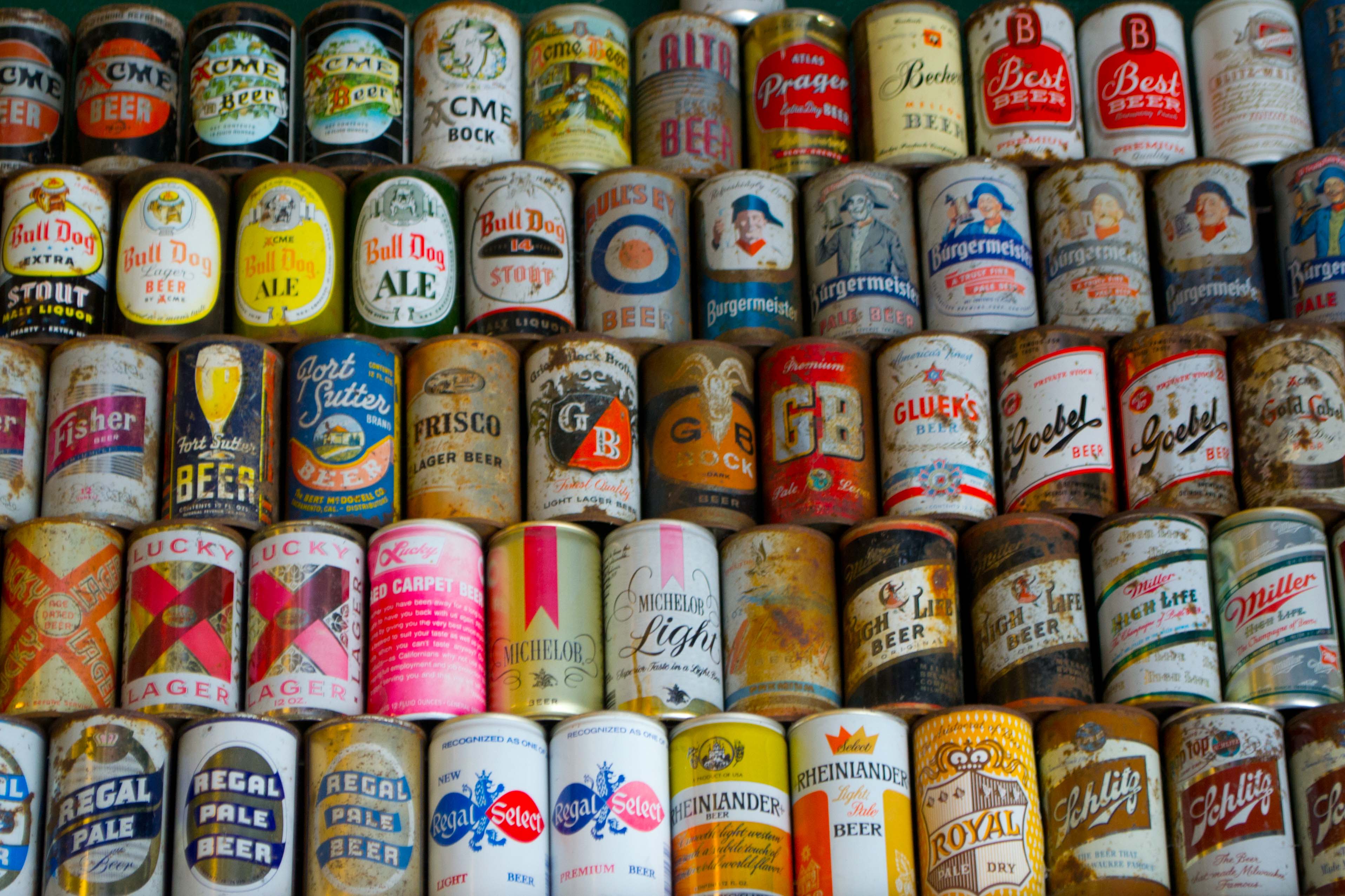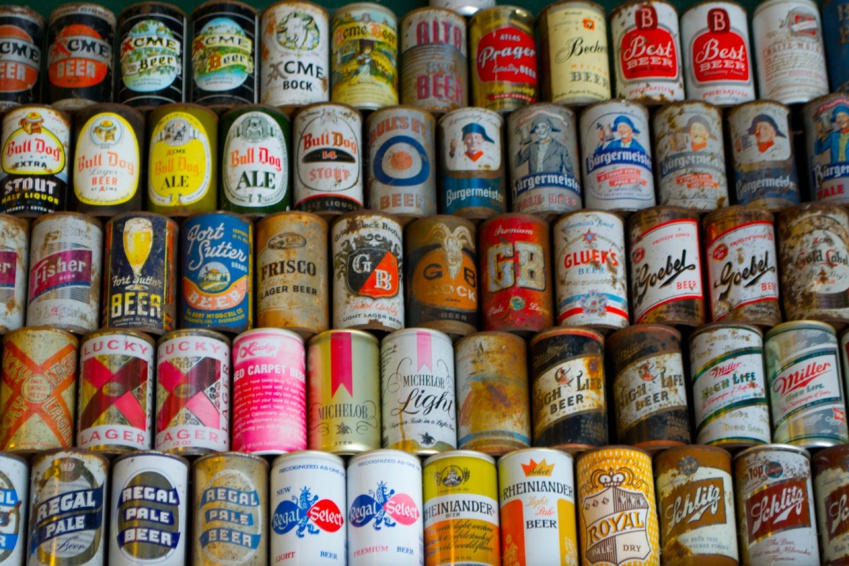According to Florian Combe, the new product development and graphics manager at Crown Bevcan EMEA, beverage cans stand out as the most ecologically sound packaging format available in the market. In our conversation with Combe, we delve into the present trends and obstacles faced by the beverage industry while examining the environmentally friendly aspects of metal cans.
Combe emphasizes the significance of aluminum's infinite recyclability, which positions the beverage can as a crucial element in the circular economy and the top choice for environmentally conscious consumers.
“The beverage can is also lightweight, easy to enjoy on the go and comes in a diverse range of sizes, offering great convenience and preferred portioning for consumers. Additionally, material usage continues to reduce in the beverage can, yielding significant supply chain advantages,” said Combe.
According to Combe, beverage cans are indeed recognized for their environmental sustainability, convenience, and portability. However, he points out that there are various other aspects to take into account when assessing different packaging choices.
“Launching a beverage brand is not just a marketing assignment,” he asserted.
“To be successful, a product launch should involve the production, commercial, design and operation departments, as well as key suppliers, from the outset.”
Cracks in aluminum armor
According to Combe, while "risk-free," maintaining production speed and efficiency while achieving high-quality print standards to meet tight supply schedules is a key challenge for production. produces soft drink cans, according to Combe.
“Our industry is based on remarkably high production speeds – among the fastest in the world. We manufacture cans up to 3,000 a minute while keeping tight tolerances – the wall of a beverage can, for example, is thinner than a human hair.”
“Beverage cans are printed once formed into a cylinder, and before the necking process reduces the top diameter for the can to be seamed. This requires a specific printing technique that allows manufacturers to print the cans at high speed while maintaining exceptional detail and color management across a curved surface,” he continues.
“This technique is called dry offset printing and is specific in the packaging industry to two-piece beverage cans.”
He went on to add durable and tamper-proof beverage cans offer superior protection to uphold stringent food safety and quality standards. It's also "completely safe" to drink from a beverage can, with a special lacquer finish that prevents any contact between the liquid product and the aluminum.
In addition, the lightweight, stackable design of the beverage cans makes transportation more efficient and environmentally friendly, minimizing the risk of product loss and helping to reduce overall carbon footprint.
Special beverage cans
Crown is seeing growing interest in decorative can design innovations that improve consumer engagement. Brand owners can achieve this by leveraging a variety of decorating techniques or even creating interactive experiences.
“At Crown, we offer a variety of decorative finishes that enhance the beverage can’s design and appeal and enable it to stand out on crowded shelves. These innovative techniques range from special varnishes – adding a matte finish to the can to achieve a premium look, for example, or offering a sensory experience to the consumer with tactile effects – to unique inks visibly reacting to changes in surrounding light and temperatures,” said Combe.
“The latter offers the possibility to create interactive designs that, when placed in the sun or on ice, can transform to reveal new colors, graphic elements or messages in the design. These innovations enhance the product experience and foster optimal consumer engagement with the brand.”
He explained that the variable printing technology allows up to 24 different design variations to be printed in a single run and helps create a range of collectible boxes and captures consumer attention through uncompromising visual effects. uniformity.
Additionally, it draws attention to innovations in smart packaging – such as unique laser-engraved codes – that enable interaction with consumers through augmented reality (AR).
“AR allows brands to deliver a wide range of content and experiences and is ideal for competitions, promotions, and games. These fun, engaging applications are winning consumer hearts and minds across the industry.”
Communicate, personalize and interact
Modern decor finishes and interactive options allow brands to create localized campaigns specifically for specific markets and demographics. Working with a supplier who can advise on different options can help brand owners deliver impactful and highly personalized products to consumers.
“Digital print is the latest technology currently being developed in the industry, which aims to overcome traditional printing limitations. It allows greater design freedom by enabling CMYK [cyan, magenta, yellow, and key] prints, recreating the full-color gamut for photorealistic images,” said Combe.
“It also allows shorter runs, fitting for seasonal or limited-edition offerings and can accurately translate unique, intricate designs onto the aluminum substrate.”
While new technology offers opportunities for smaller markets, traditional printing methods offer efficiency and added value because they are compatible with higher production speeds.
With increasing competition in the retail environment, brands need packaging that captures the consumer's attention at the point of sale.
“Beverage cans have a large, printable surface area that serves as a 360-degree billboard for brands on shelves, which is typically not feasible with other packaging formats.”
“In addition, high-definition printing enables brands to depict intricate designs and strong, bold colors directly onto the aluminum can, boosting consumer interaction with the package while communicating a unique identity,” said Combe.
Combe emphasizes the significance of aluminum's infinite recyclability, which positions the beverage can as a crucial element in the circular economy and the top choice for environmentally conscious consumers.
“The beverage can is also lightweight, easy to enjoy on the go and comes in a diverse range of sizes, offering great convenience and preferred portioning for consumers. Additionally, material usage continues to reduce in the beverage can, yielding significant supply chain advantages,” said Combe.
According to Combe, beverage cans are indeed recognized for their environmental sustainability, convenience, and portability. However, he points out that there are various other aspects to take into account when assessing different packaging choices.
“Launching a beverage brand is not just a marketing assignment,” he asserted.
“To be successful, a product launch should involve the production, commercial, design and operation departments, as well as key suppliers, from the outset.”
Cracks in aluminum armor
According to Combe, while "risk-free," maintaining production speed and efficiency while achieving high-quality print standards to meet tight supply schedules is a key challenge for production. produces soft drink cans, according to Combe.
“Our industry is based on remarkably high production speeds – among the fastest in the world. We manufacture cans up to 3,000 a minute while keeping tight tolerances – the wall of a beverage can, for example, is thinner than a human hair.”
“Beverage cans are printed once formed into a cylinder, and before the necking process reduces the top diameter for the can to be seamed. This requires a specific printing technique that allows manufacturers to print the cans at high speed while maintaining exceptional detail and color management across a curved surface,” he continues.
“This technique is called dry offset printing and is specific in the packaging industry to two-piece beverage cans.”
He went on to add durable and tamper-proof beverage cans offer superior protection to uphold stringent food safety and quality standards. It's also "completely safe" to drink from a beverage can, with a special lacquer finish that prevents any contact between the liquid product and the aluminum.
In addition, the lightweight, stackable design of the beverage cans makes transportation more efficient and environmentally friendly, minimizing the risk of product loss and helping to reduce overall carbon footprint.
Special beverage cans
Crown is seeing growing interest in decorative can design innovations that improve consumer engagement. Brand owners can achieve this by leveraging a variety of decorating techniques or even creating interactive experiences.
“At Crown, we offer a variety of decorative finishes that enhance the beverage can’s design and appeal and enable it to stand out on crowded shelves. These innovative techniques range from special varnishes – adding a matte finish to the can to achieve a premium look, for example, or offering a sensory experience to the consumer with tactile effects – to unique inks visibly reacting to changes in surrounding light and temperatures,” said Combe.
“The latter offers the possibility to create interactive designs that, when placed in the sun or on ice, can transform to reveal new colors, graphic elements or messages in the design. These innovations enhance the product experience and foster optimal consumer engagement with the brand.”
He explained that the variable printing technology allows up to 24 different design variations to be printed in a single run and helps create a range of collectible boxes and captures consumer attention through uncompromising visual effects. uniformity.
Additionally, it draws attention to innovations in smart packaging – such as unique laser-engraved codes – that enable interaction with consumers through augmented reality (AR).
“AR allows brands to deliver a wide range of content and experiences and is ideal for competitions, promotions, and games. These fun, engaging applications are winning consumer hearts and minds across the industry.”
Communicate, personalize and interact
Modern decor finishes and interactive options allow brands to create localized campaigns specifically for specific markets and demographics. Working with a supplier who can advise on different options can help brand owners deliver impactful and highly personalized products to consumers.
“Digital print is the latest technology currently being developed in the industry, which aims to overcome traditional printing limitations. It allows greater design freedom by enabling CMYK [cyan, magenta, yellow, and key] prints, recreating the full-color gamut for photorealistic images,” said Combe.
“It also allows shorter runs, fitting for seasonal or limited-edition offerings and can accurately translate unique, intricate designs onto the aluminum substrate.”
While new technology offers opportunities for smaller markets, traditional printing methods offer efficiency and added value because they are compatible with higher production speeds.
With increasing competition in the retail environment, brands need packaging that captures the consumer's attention at the point of sale.
“Beverage cans have a large, printable surface area that serves as a 360-degree billboard for brands on shelves, which is typically not feasible with other packaging formats.”
“In addition, high-definition printing enables brands to depict intricate designs and strong, bold colors directly onto the aluminum can, boosting consumer interaction with the package while communicating a unique identity,” said Combe.


 Discover the Ecological Advantages of Beverage Cans: Environmentally Friendly and Innovative Packaging Designs
Discover the Ecological Advantages of Beverage Cans: Environmentally Friendly and Innovative Packaging Designs





 Companies
Companies